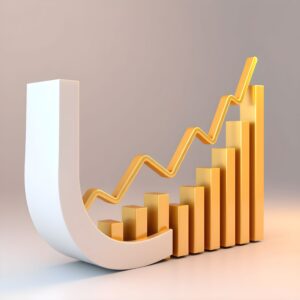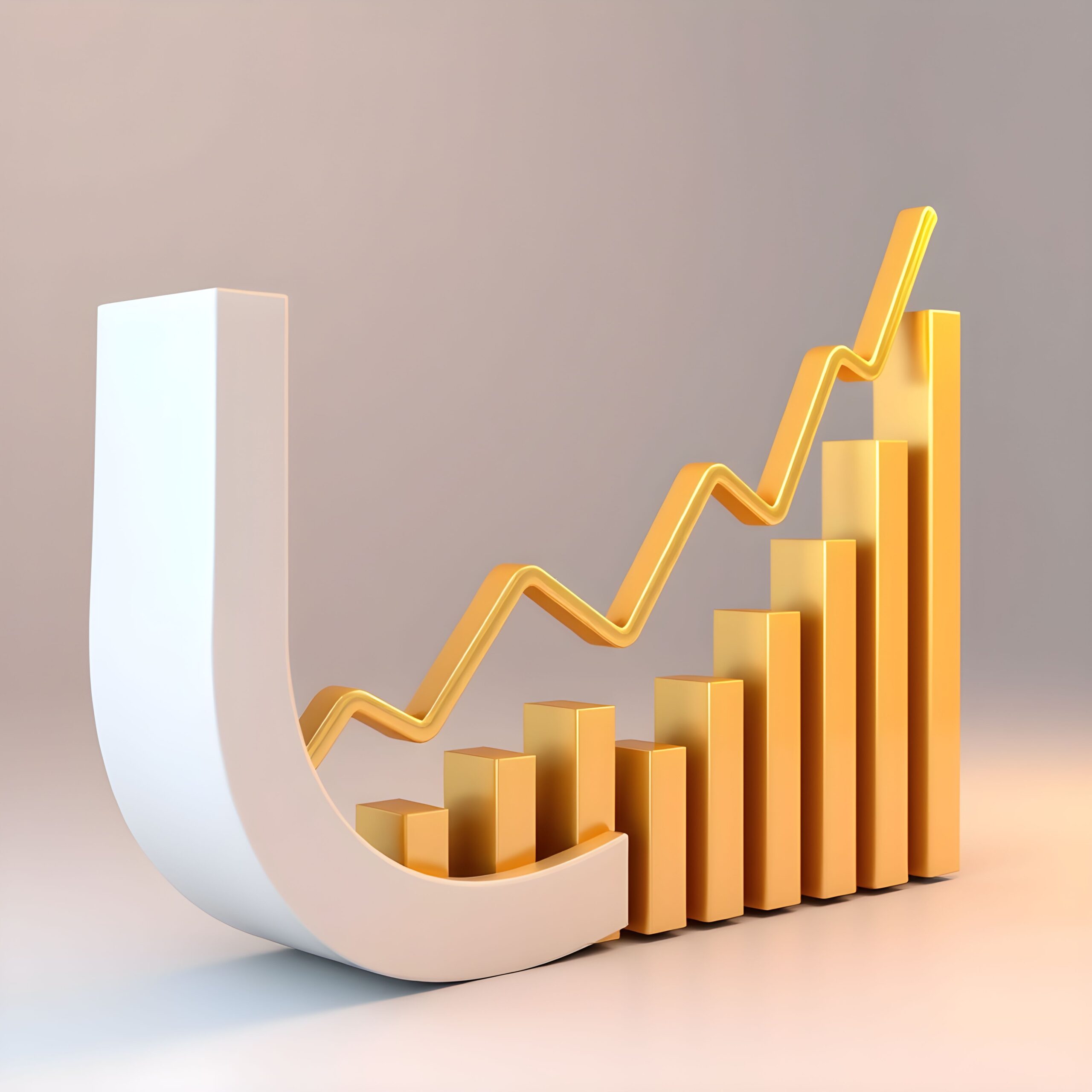Introduction: A Rough Start to 2025
The first quarter of 2025 has proven to be a challenging period for the U.S. economy. Recent reports have shown unexpected signs of vulnerability, most notably the contraction in Gross Domestic Product (GDP), which fell by 0.3% on an annualized basis. This marks the first time since the pandemic that the U.S. economy has experienced a contraction. Though GDP is just one economic indicator, the news has left analysts, investors, and policymakers questioning whether the U.S. is on the verge of a recession or just experiencing a temporary slowdown.
In addition to the GDP contraction, the ADP jobs report showed softer-than-expected hiring in the private sector, indicating that labor market growth is losing steam. At the same time, inflation continues to run hot, with core inflation numbers well above the Federal Reserve’s target. These mixed signals have created a complex environment for policymakers and businesses alike.
While the U.S. economy may not yet be in recession, these early signs of contraction are a worrying trend for the coming months. With inflation and slow growth, the possibility of stagflation — a combination of stagnant economic growth and high inflation — becomes increasingly likely. This article will explore these developments in detail and provide a comprehensive analysis of their potential impacts.
GDP Contraction: A Breakdown of the Numbers
Imports and Trade Deficits Weigh on Growth
The contraction in GDP for Q1 2025 has largely been attributed to a sharp increase in imports. The rise in imports came in response to new tariffs introduced by the Trump administration, pushing businesses to bring in goods from overseas before higher tariffs could be imposed. This surge in imports, while seemingly a sign of global interconnectedness, actually had a negative impact on the GDP number, as imports are subtracted from the overall GDP calculation. This alone accounted for almost 5 full percentage points of the negative GDP reading.
Trade imbalances are not new to the U.S. economy, but this sharp movement underscores the fragility of the current trade environment, particularly amid global uncertainties. A weaker-than-expected international trade environment — with slowing growth in China and ongoing geopolitical tensions — only exacerbates the situation.
Government Spending Decline
Another major contributing factor to the GDP decline was a reduction in government spending. Federal spending, which had been bolstered during the pandemic, dropped by 5.1%, marking a significant reversal in fiscal policy. Much of this decline came from reductions in non-defense spending, including social and welfare programs that had been ramped up during the COVID-19 pandemic. In addition, state and local governments also cut back on spending, particularly in infrastructure and education sectors.
While the decrease in government expenditures may have helped curb inflationary pressures, it also contributed to slower overall growth. Government spending, particularly in the form of investments in infrastructure, has historically been a key driver of economic expansion. Its absence left a noticeable gap in the economy during the first quarter.
Consumer and Business Spending Remains Resilient
Despite these setbacks, there were positive signs beneath the surface. Real final sales to private domestic purchasers, a critical measure of underlying domestic demand, rose by 3% in Q1 2025. This is a positive sign that consumer and business spending are still holding up, even if the overall GDP number suggests otherwise.
Consumer spending, which is a major component of U.S. GDP, remains relatively strong despite inflationary pressures. Business investment has also stayed relatively stable, particularly in technology and machinery. This indicates that despite external challenges such as higher tariffs and reduced government spending, the core domestic economy remains relatively robust.
Economic Outlook for 2025
While the Q1 contraction was troubling, many economists believe it is too early to declare the onset of a full-scale recession. The 0.3% contraction is small compared to the more severe declines experienced during the pandemic. As long as consumer and business spending hold up, the U.S. economy may avoid the prolonged downturn feared by some. However, there is little doubt that economic growth will be slower in the coming quarters, and the risks of stagflation remain elevated.
ADP Jobs Report: Weakness in the Labor Market
Soft Job Growth
Alongside the GDP contraction, the ADP National Employment Report for April 2025 painted a concerning picture for the labor market. Private sector payrolls grew by just 62,000 jobs, far below the expected 125,000. This marked a significant slowdown in the rate of job creation, especially considering that the job market had been one of the U.S. economy’s main bright spots over the past few years.
The sectors that typically drive job growth, such as leisure and hospitality, showed weaker-than-expected hiring, with several industries reporting net job losses. The healthcare and education sectors, traditionally more stable, also reported slower-than-expected growth. This signals that businesses across a broad range of industries are becoming more cautious about hiring, likely due to the uncertain economic outlook and persistent inflation.
Wages Remain Elevated
While hiring slowed, wage growth remained strong. The ADP report showed that average pay increased by 5.3% year-over-year. This suggests that while businesses are reluctant to hire new workers, they are still willing to offer higher wages to retain their current workforce. The high wage growth reflects ongoing labor shortages and competition for skilled workers, particularly in industries like tech and healthcare.
However, this strong wage growth, combined with persistent inflation, means that workers’ purchasing power is being eroded. For example, although wages are rising, the cost of living is increasing at an even faster pace, particularly in housing and healthcare.
What Does This Mean for the Fed?
The mixed signals from the labor market have added to the Federal Reserve’s dilemma. On one hand, weaker job growth indicates that higher interest rates may be working to slow the economy. On the other hand, strong wage growth and inflationary pressures suggest that the Fed will have to maintain its aggressive stance for longer. Given this, the Fed’s policy approach in the second half of 2025 will likely remain cautious, with interest rates staying high until there is a clearer indication that inflation has come under control.
Inflation: A Persistent Problem
Core PCE Inflation Continues to Run Hot
The latest data from the Commerce Department revealed that the core Personal Consumption Expenditures (PCE) price index — the Federal Reserve’s preferred measure of inflation — rose by 3.5% year-over-year in March 2025. This was higher than the expected 3.4%, highlighting that inflationary pressures remain deeply entrenched.
Despite a slowdown in the price of certain goods — particularly used vehicles and electronics — services inflation continues to be the major driver of rising prices. Prices for housing, healthcare, and personal services are all climbing, with no clear signs of easing. Given that these categories make up a large portion of household spending, the impact of inflation is being keenly felt by consumers.
The Fed’s Response to Inflation
The persistence of high inflation is a major concern for the Federal Reserve. While the economy is showing signs of slowing, inflation remains far above the Fed’s target of 2%. As a result, the central bank is unlikely to cut rates in the near future, despite the softening job market and weak GDP numbers. The tight labor market and strong wage growth suggest that inflationary pressures could remain stubbornly high for the foreseeable future, making it difficult for the Fed to ease monetary policy.
Impact on Consumers and Businesses
The inflationary environment is having a direct impact on consumers, who are facing higher prices for essential goods and services. For businesses, rising costs for inputs — such as labor, materials, and energy — are squeezing profit margins. In particular, businesses in sectors like hospitality and transportation are struggling with higher fuel and labor costs, which are cutting into their ability to pass on price increases to consumers.
S&P 500: Market Reaction to Economic Data
Stock Market Slide
The response from the stock market to the latest economic data was swift and decisive. The S&P 500 index dropped by 1.7% following the release of the GDP and ADP job reports. Investors were clearly concerned that the combination of weak GDP growth, soft job creation, and persistent inflation would lead to a prolonged period of economic stagnation.
The selloff was broad-based, with consumer discretionary and financial sectors leading the declines. Technology stocks, which had enjoyed a strong rally earlier in the year, also came under pressure. The concern is that a slowing economy, combined with rising borrowing costs, could lead to reduced corporate profits, particularly in growth sectors like technology.
Bond Markets React
The bond markets also experienced volatility in response to the economic data. While Treasury yields initially fell following the GDP contraction, they quickly rebounded as concerns over inflation resurfaced. The 10-year Treasury yield climbed to 4.58%, signaling that investors are anticipating the Fed will maintain its aggressive stance on interest rates for the time being.
What Lies Ahead for the U.S. Economy?
As we move further into 2025, the U.S. economy faces a period of uncertainty. The contraction in GDP, weaker-than-expected job growth, and stubborn inflation are all warning signs that economic conditions could worsen in the coming months. However, there are also reasons for cautious optimism. Consumer spending remains resilient, and core business investment has held up despite the economic headwinds.
The Federal Reserve will likely maintain its tight monetary policy stance until inflation shows more convincing signs of moderation. As such, stagflation — a combination of slow economic growth and high inflation — remains a real risk for the U.S. economy in 2025. For businesses and consumers alike, navigating this uncertain economic environment will require careful planning and adaptability.
The outlook for the S&P 500 and other financial markets will depend largely on whether economic growth can rebound in the second half of the year or whether inflationary pressures continue to constrain the recovery.
Feel free to check out our other website at : https://scoremaxed.com/











